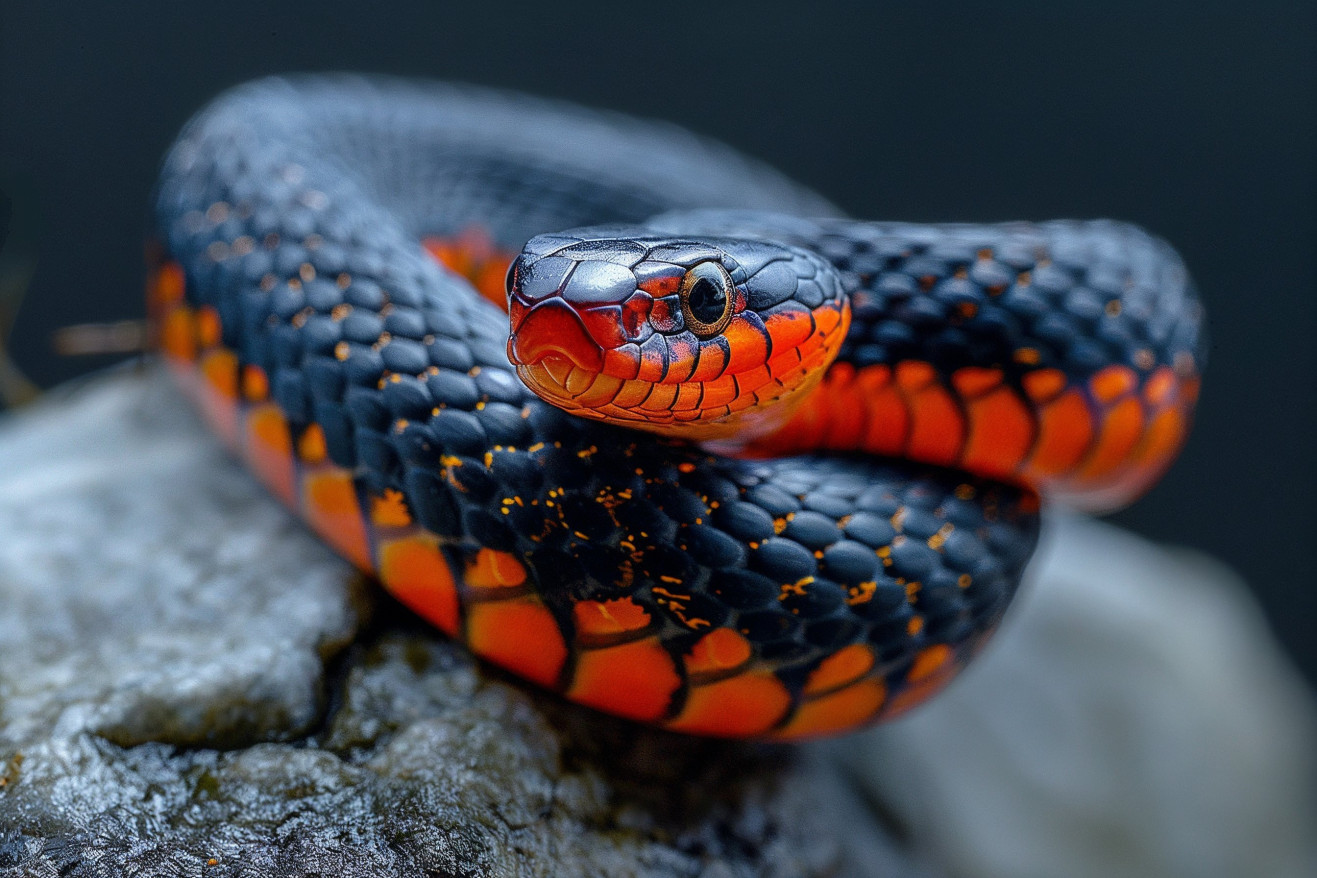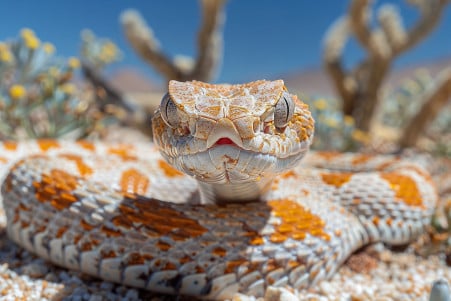Do Red-Bellied Snakes Have Venom? Information and Tips for Safe Encounters
28 May 2024 • Updated 27 May 2024

Because red-bellied snakes are so commonly found by hikers and other outdoor enthusiasts, many people want to know if these snakes are venomous and if they should be avoided. Despite their somewhat menacing appearance, red-bellied snakes are not venomous and are not dangerous to people. They eat primarily small mammals, frogs, and other snakes, so they are not a threat to humans if you come across them while you're out on a hike.
To help you better understand these snakes and the potential dangers they pose, we've taken a deep dive into the research of herpetologists and other wildlife biologists. These multidisciplinary investigations have looked at the physiology, behavior, and ecological roles of red-bellied snakes in a variety of different locations. By examining these comprehensive studies, you can get a well-rounded view of how to accurately recognize red-bellied snakes and how to safely share their natural environments with them.
Are Red-Bellied Snakes Poisonous?
How to Tell Red-Bellied Snakes Apart: Physical Characteristics and Behavior
Red-bellied snakes are named for their red to orange bellies, which are in stark contrast to their dark gray to reddish-brown backs, according to Kentucky Snake Identification. They are typically 8-12 inches long and have keeled (ridged) scales and a small white mark below each eye. Three light marks on the back of the neck may or may not connect to form a partial collar. If threatened, these non-venomous snakes are unlikely to bite people but may flatten their body, emit a musky smell, or even play dead, according to the same Kentucky reference.
Red-bellied snakes are diurnal in the spring and fall and become nocturnal in the summer, according to South Dakota's reference. It's important to be able to recognize them based on their physical characteristics and know how they react when they feel threatened in order to have a safe encounter with this interesting snake in the wild. Learn more about where they live and how to find them in the next section.
Habitat and Distribution: Where Can You Find Red-Bellied Snakes?
Red-bellied snakes are most commonly found in moist, wooded areas with lots of ground cover and small clearings, according to the Animal Diversity Web. They live in a variety of places, including eastern North America from southern Canada to the Gulf Coast, according to the Missouri Department of Conservation.
They have small ranges and don’t travel far from their winter dens. Loss of habitat and getting hit by cars during migration are potential threats to their survival, according to the Animal Diversity Web. Conservation and awareness are important to make sure this snake continues to thrive in the wild.
Reproduction and the Life Cycle: What We Know About Red-Bellied Snake Biology
In the wild, red-bellied snakes mate in the spring and fall, and females give birth to live young in the late summer or fall, according to a study in The Canadian Field-Naturalist. Notably, females in this northern population may reach sexual maturity at a smaller size than other populations, but have similar clutch sizes. The study also showed that most adult females caught in the summer were gravid, suggesting that these snakes have an annual reproductive cycle.
Sexual maturity is usually attained in 2-3 years, and litters can include anywhere from 2-21 babies, according to the Amphibians and Reptiles of South Dakota reference. Knowing the reproductive biology of red-bellied snakes is important for conservation and population management in their natural environments. By understanding their mating habits and how long they're pregnant, conservationists can work to ensure the survival of this interesting species.
How to Tell Red-Bellied Snakes Apart From Other Snakes
Red-bellied snakes are often mistaken for other small snakes, but they have several physical traits that make them easy to distinguish. According to the Kentucky Snake Identification guide, red-bellied snakes are most commonly recognized by their bright crimson-red to orange belly, which is in stark contrast to their dark gray to reddish-brown back. They also have a small white spot below each eye and three light spots that form an incomplete ring around the neck.
One of the most important ways to tell red-bellied snakes apart from other snakes is by the number of scale rows - red-bellied snakes have 17 scale rows, which is a key way to differentiate them from Dekay's brownsnake and other Storeria snakes, according to the Northern Red-bellied Snake - HRM guide. Knowing these specific physical traits is important for accurate identification and avoiding misidentification, which can result in unnecessary concern or danger for these harmless, non-venomous reptiles.
Living With Red-Bellied Snakes
Red-bellied snakes are shy and will generally avoid humans, even during the breeding season, according to A-Z Animals. Although pregnant females may be more aggressive, bites are uncommon and usually result in only minor symptoms. If you come across a red-bellied snake, you should leave it alone and not handle it, according to the Aussie Pythons & Snakes Forum.
Proper knowledge and understanding can help reduce unnecessary fear and encourage coexistence. As noted by the LITFL Toxinology Library, red-bellied snake venom is less potent than that of other elapids. Protecting their natural habitats and working to minimize human-snake interactions is essential to the survival of this intriguing snake species.
Conclusion: Understanding the Harmless Behavior of Red-Bellied Snakes
Red-bellied snakes are non-venomous and pose little threat to humans, according to the Florida Snake ID Guide. Adult red-bellied snakes in Florida are typically 8-10 inches long, with a maximum recorded length of 16.6 inches. These small, slender snakes have a gray to reddish-brown background color.
When threatened, red-bellied snakes will not bite in defense. Instead, they may squirm vigorously, flatten their bodies, and release a foul-smelling musk, as described in the Florida Snake ID Guide. They are nocturnal and primarily eat slugs and earthworms, although they will occasionally eat other small animals.
According to Ontario Nature, red-bellied snakes are most often found in forest edge habitats, fields, and meadows with lots of ground cover. They have small territories and usually don’t travel more than 500 meters from their hibernation sites. The Animal Diversity Web adds that they prefer wet, moist, and cool habitats, including river bays, creek bottomlands, and sphagnum bogs.
By understanding their place in the food chain and working to preserve their natural habitats, we can help ensure the survival of this interesting species. This article has covered the essentials of red-bellied snakes, giving readers the information they need to understand and coexist with these harmless animals.


